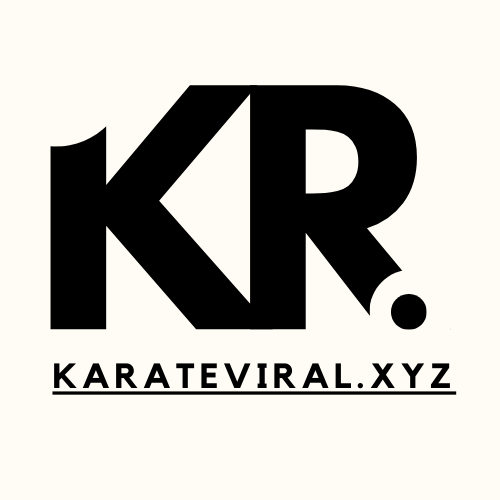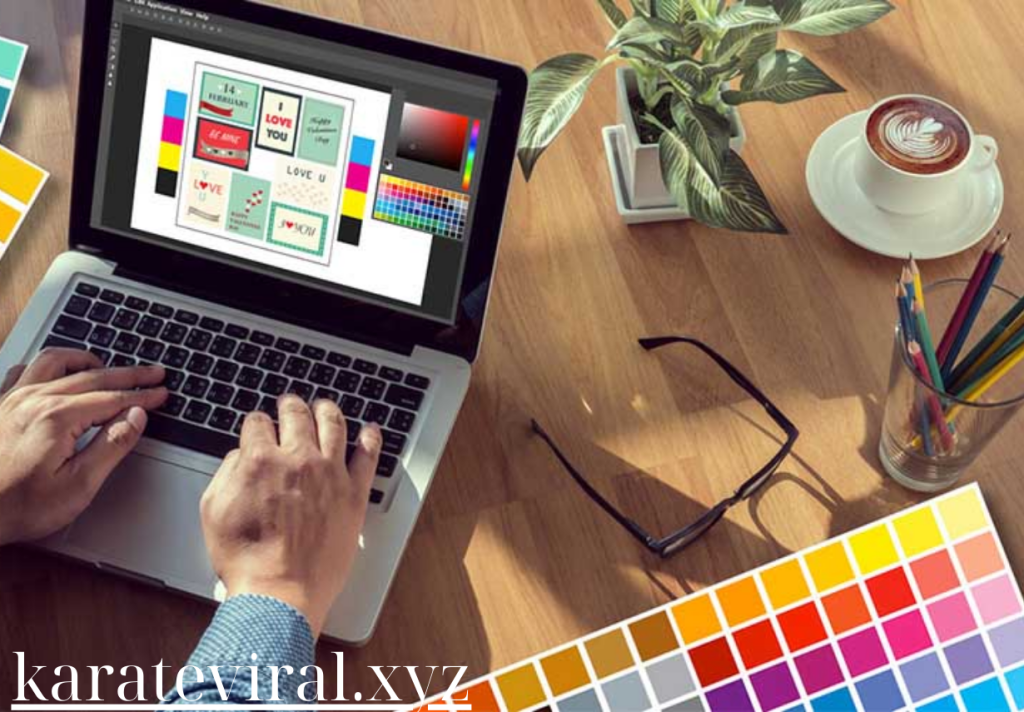Content Creation & Engagement
Visual Content Creation for Social Media: Design Stunning Graphics and Images
In today’s fast-paced digital landscape, visual content plays a crucial role in capturing the attention of social media users. Well-designed graphics and images not only help you stand out in crowded feeds but also communicate your message more effectively. With the right approach to visual content creation, you can build a strong brand presence, engage your audience, and drive more interactions across social platforms.
This guide will provide actionable tips and strategies for creating stunning graphics and images for social media, ensuring your content resonates with your audience and amplifies your brand’s voice.
1. Why Visual Content Matters for Social Media
Visual content is more engaging than text-based content. Studies have shown that social media posts with images receive significantly higher engagement than those without. As attention spans on platforms like Instagram, Facebook, and Twitter grow shorter, users are more likely to stop scrolling and interact with visually appealing posts.
Benefits of Visual Content
- Higher Engagement: Visual content gets more likes, shares, and comments than text alone.
- Improved Brand Awareness: Consistent, high-quality visuals help reinforce your brand’s identity and make your content more recognizable.
- Better Communication: Images and graphics simplify complex messages and convey information quickly.
- Increased Shareability: Visual content is more likely to be shared, increasing the reach of your posts.
2. Elements of Effective Social Media Graphics
When creating visual content for social media, certain elements contribute to the effectiveness of your graphics and images. These include strong visuals, clear messaging, and consistency in design.
Strong Visuals
Your images or graphics should be eye-catching and high quality. Social media platforms like Instagram and Pinterest rely heavily on visuals, so your graphics need to stand out. Use bold colors, clean lines, and attention-grabbing visuals that align with your brand’s style.
- High-resolution images: Use high-quality images that aren’t pixelated. Low-resolution images can hurt your credibility and turn off potential followers.
- Creative composition: Experiment with different angles, compositions, and visual elements to create dynamic and interesting posts.
Clear and Concise Messaging
The messaging in your visuals should be simple and direct. Social media users scroll quickly, so it’s important to convey your message at a glance.
- Short, punchy text: Include short text snippets, if necessary, that enhance your image. Avoid lengthy paragraphs in your visuals.
- Bold typography: Use easy-to-read fonts that are bold enough to grab attention, but ensure that they align with your brand identity.
Consistent Branding
Visual consistency is key to building brand recognition. Use a cohesive design style across your social media graphics, including consistent fonts, colors, and imagery.
- Brand colors: Stick to your brand’s color palette to maintain a consistent look. If your brand uses specific colors, make sure they’re present in your social graphics.
- Logo placement: Include your logo in a subtle way on your graphics to ensure brand visibility without overwhelming the image.
Example: A fashion brand can use its signature color palette and bold, clean typography across all its social media posts, making them instantly recognizable to its audience.
3. Types of Visual Content for Social Media
There are various types of visual content you can create for social media, each serving different purposes. Mixing these types of content ensures variety and keeps your audience engaged.
Image Posts
Image posts are the bread and butter of social media. They can feature product shots, lifestyle imagery, behind-the-scenes photos, or event images. To make the most impact, your images should be vibrant, high-quality, and related to your brand’s messaging.
- Product photography: Showcase your products in creative ways with vibrant backgrounds, close-up shots, or in-action photos.
- Lifestyle imagery: Use images that show your products or services being used in real-life scenarios, connecting with your audience emotionally.
Infographics
Infographics are ideal for sharing complex information in a visually digestible format. They are particularly popular on platforms like Pinterest and LinkedIn, where users look for informative, shareable content.
- Use charts and icons: Incorporate simple charts, icons, and bullet points to make the information easier to understand.
- Keep it focused: Focus on one key topic or statistic to avoid overwhelming the viewer.
Text Overlays on Images
Combining text with images can create powerful social media posts, especially for quotes, announcements, or promotions. Keep the text minimal and ensure it doesn’t overshadow the image.
- Quotes: Inspirational quotes or statements can drive engagement when paired with the right image.
- Announcements: Use text overlays for sale promotions, product launches, or event announcements to make the message stand out.
Carousel Posts
Carousel posts allow you to share multiple images in a single post, making them perfect for storytelling, tutorials, or showcasing product collections. Instagram is particularly popular for this format.
- Storytelling format: Use carousel posts to break down a story or concept step by step, with each image advancing the narrative.
- Before and after images: Show transformations or comparisons by using side-by-side images in a carousel post.
Memes and GIFs
Memes and GIFs are highly shareable and are often used to inject humor into your social media strategy. They are especially effective on platforms like Twitter and Instagram, where light-hearted, entertaining content performs well.
- Stay relevant: Use trending memes or GIFs that align with your brand’s personality, ensuring they resonate with your target audience.
- Keep it branded: While memes are often informal, be sure to include your brand’s tone and voice to maintain consistency.
Example: A fitness brand can use a carousel post to showcase a step-by-step workout routine, with each slide demonstrating a different exercise, while using text overlays to describe the moves.
4. Design Tools for Social Media Graphics
There are many tools available for designing social media graphics, even if you don’t have a background in graphic design. These tools offer templates, design elements, and user-friendly interfaces to create professional-looking visuals quickly.
Canva
Canva is a popular design tool for creating social media graphics. It offers a wide range of templates, fonts, images, and design elements, making it ideal for non-designers who need polished visuals.
- Best for: Simple, customizable graphics and templates for social media.
- Features: Drag-and-drop interface, pre-designed templates, access to stock photos, and customizable fonts.
Adobe Spark
Adobe Spark provides easy-to-use tools for creating stunning visuals, videos, and web pages. It’s part of the Adobe Creative Cloud, making it a great option for those already familiar with Adobe products.
- Best for: More advanced visual designs with access to premium elements.
- Features: Templates for social media, customizable designs, and easy sharing to platforms like Instagram and Facebook.
Piktochart
Piktochart is a great tool for creating infographics and charts. If your social media content includes data or statistics, this tool simplifies the design process by offering a range of professional-looking infographic templates.
- Best for: Infographics and visualizing data for social media.
- Features: Drag-and-drop editor, customizable templates, chart-building tools, and access to icons and illustrations.
Visme
Visme is a versatile design tool that allows users to create social media graphics, presentations, and infographics. It’s particularly useful for teams who want to collaborate on visual content creation.
- Best for: Social media graphics with more interactive and animated features.
- Features: Customizable templates, access to stock images and icons, and collaboration tools for teams.
Example: A marketing agency can use Canva to create sleek, branded infographics that outline marketing strategies or statistics, then share these posts on LinkedIn for professional engagement.
5. Optimizing Visual Content for Different Platforms
Each social media platform has its own best practices for image sizes, formats, and styles. To get the most out of your visuals, optimize them for the specific platform where they’ll be shared.
- Best format: Square (1080 x 1080 pixels) or vertical (1080 x 1350 pixels) images work best for Instagram.
- Style: Focus on high-quality, aesthetically pleasing images. Use consistent filters to maintain brand consistency.
- Hashtags: Use relevant hashtags to increase discoverability.
- Best format: Use a 1200 x 630-pixel image for the best display in newsfeeds.
- Style: Keep text minimal on images and use bright, contrasting colors to grab attention in crowded feeds.
- Captions: Provide more detailed captions and CTAs to encourage interaction.
- Best format: Vertical images with a 2:3 aspect ratio (1000 x 1500 pixels) perform best on Pinterest.
- Style: Focus on images that offer useful tips or “how-to” steps, as Pinterest users often search for practical information.
- Text overlays: Add clear text overlays to explain the content of the image at a glance.
- Best format: Use a 1200 x 675-pixel image to maximize display in Twitter’s timeline.
- Style: Keep images simple and direct, using graphics or photos that quickly communicate the message.
- GIFs: Twitter is ideal for using GIFs, so don’t be afraid to incorporate movement into your visual content.
Example: A food blogger can create vertical images for Pinterest, showcasing a recipe with step-by-step instructions, while using square-format images on Instagram to highlight the finished dish.
Conclusion: Create Stunning Visual Content for Social Media
Visual content creation is essential for standing out on social media and connecting with your audience. By using high-quality graphics, consistent branding, and clear messaging, you can design visuals that not only capture attention but also drive engagement and brand recognition. Utilize design tools like Canva, Adobe Spark, and Piktochart to create professional-looking graphics, and optimize your visuals for the specific platform to maximize their impact. With the right approach, your social media graphics can become a powerful tool in your content marketing strategy.

